I just thought I'd share a few key and very important fighter pilot tips. I see a LOT of people making mistakes that can usually be traced back to one of these three tips. So, here are three VERY important tips that I think are VERY much overlooked in a dogfight.
Lift VectorProbably one of the leading causes of deaths in the MA is placing your lift vector in the wrong location. A lot of people will just turn their plane into their opponent trying to line up a shot. However if you are not behind your opponents 3-9 line then you are doing it wrong and you are going to die. First, what is the 3-9 Line? You might know that there are positions off your plane that correspond to that on a clock. I've marked 4 of them in the picture below: 12 o'clock, 3 o'clock, 6 o'clock, and 9 o'clock. Just like 12 o'clock on a clock is at the "top" of a clock, 12 o'clock for your plane is to your "front". Just like 6 o'clock on a clock is at the "bottom", 6 o'clock for your plane is "behind" you. That's why when people call out "Bandits, 10 o'clock high!" on vox you look off the front left side of your plane, the 10 o'clock position, and high for the bandits. The 3-9 Line is quite literally the line that runs across your wings from the 3 o'clock position to 9 o'clock. In the simplest terms, everything behind this line is on your 6, everything in front of this line in on your 12.

Now what is Lift vector? It's the direction of your lift really. For an airplane that is up! Next time you're sitting in the cockpit hold down the 5 key on your keypad to look straight up. That is your lift vector you are looking at! Now comes the tricky part, where to put your lift vector. When you get into a turning fight and you have not gotten yourself behind your opponents 3-9 line then you want to position your lift vector behind their tail. In a rolling scissors fight you want to be pointing your gunsight behind the tail of your opponent. You want to fly to his SIX before you start shooting. There is the whole "Line up a crossing snap shot and kill him" thing that you can do too, but if you miss that shot then you put yourself into a very vulnerable position and will most likely overshoot if you don't know what you're doing. SO, it's always safer to get onto your opponents 6 before you start lining up for a shot. This way even if you miss you won't be at immediate risk of overshooting. Here's a few pictures of how lift vector will win you a rolling scissors fight.
In this first shot we can see really neither one of us is behind the others 3-9 line as we go through our rolling scissors. See how I am positioning my lift vector behind my opponent? My nose is pointing towards the airspace behind him instead of at or in front of him. I want to get behind his 3-9 line before I start trying for a shot.
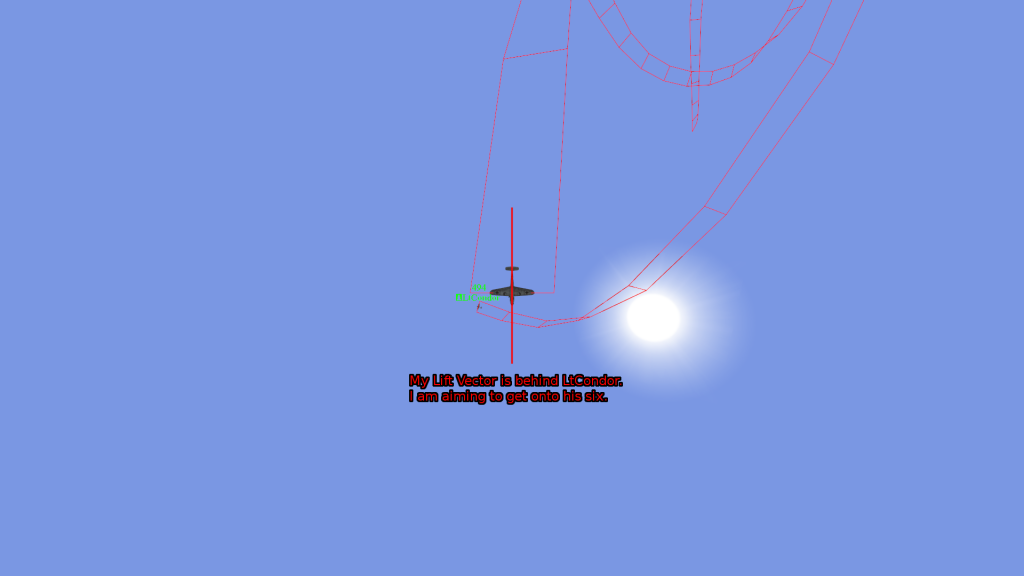
From his perspective we can see his lift vector is out in front of my 3-9 line. His nose is pointed in front of me. He is trying to turn into me for a shot. Not positioning his lift vector behind my 3-9 line while I AM positioning MY lift vector behind his 3-9 line means he has more forward momentum than me and he is going to overshoot, allowing me behind his 3-9 line.
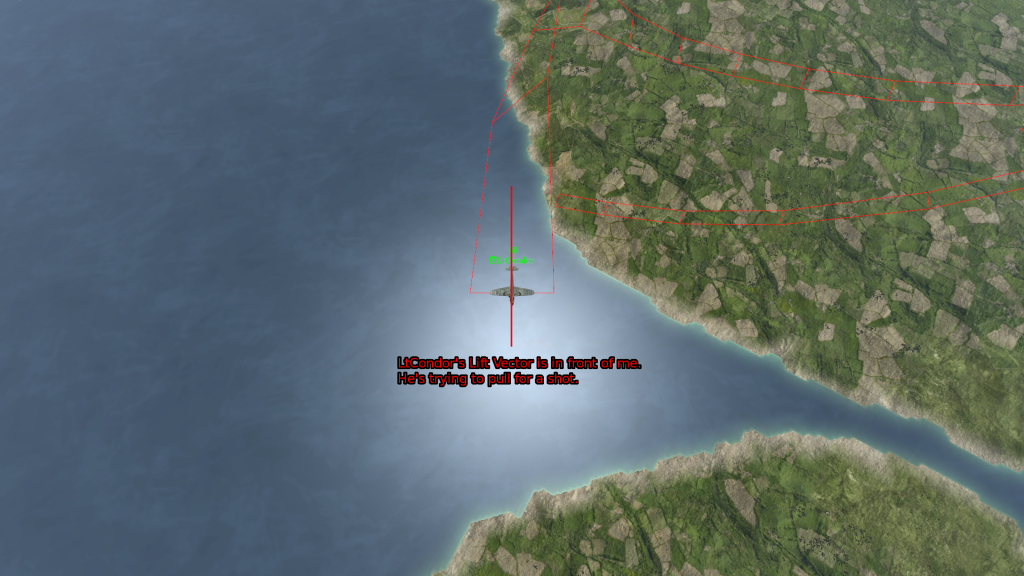
And this is the eventual outcome. I am now clearly behind his 3-9 line and am ready to start lining up my shot.
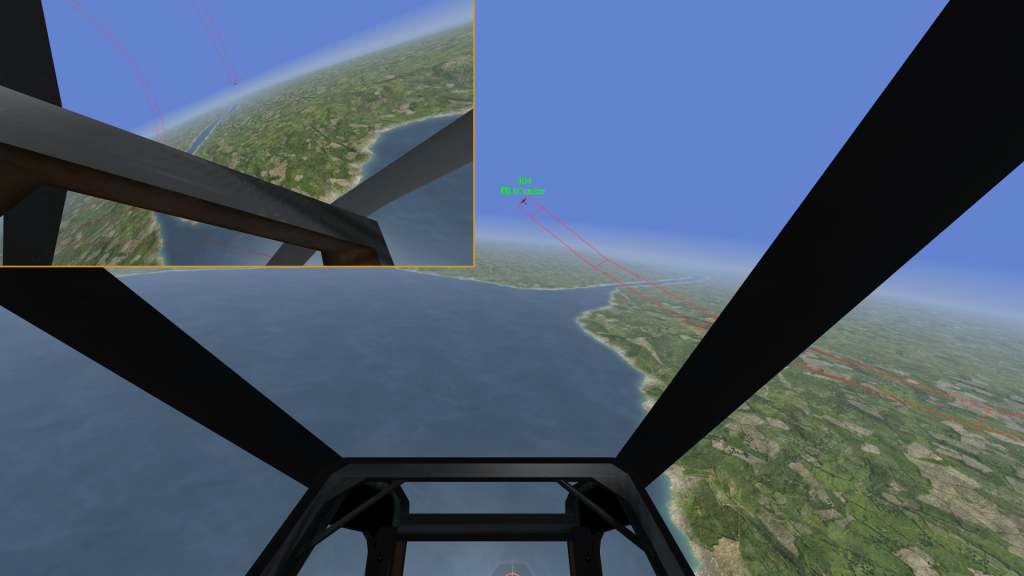
One other example from the merge this time. On the merge me and the other Spit go into the vertical. We both position our lift vectors behind the others 3-9 line trying to gain a positional advantage.
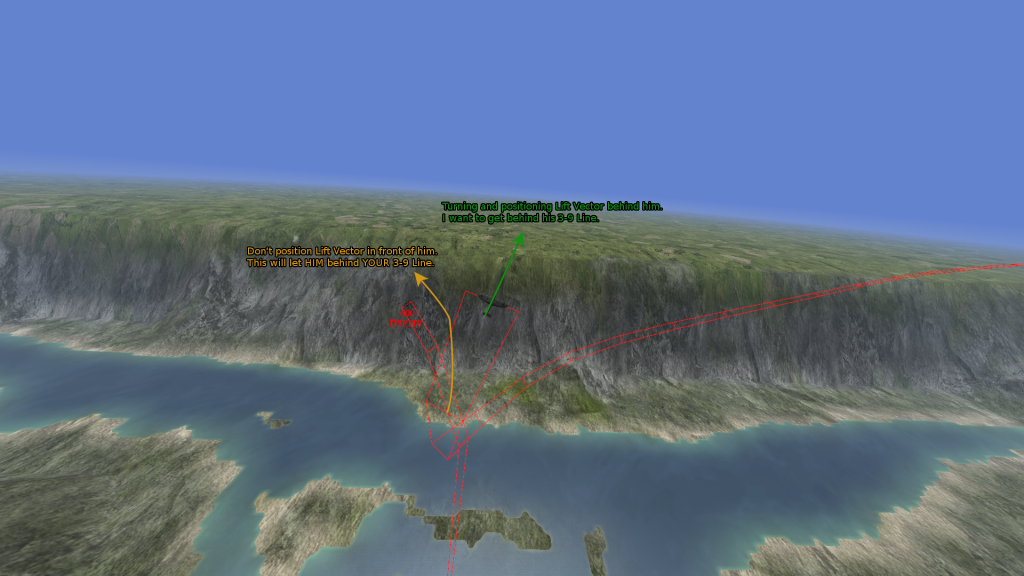
At the top of the loop neither one of us gains the other 6, however I could see I had a slight altitude advantage going into the merge and now we're pretty much co-alt. This tells me I have a small E advantage (This was a duel. Same plane, same alt merge, means roughly same speed as well) so I'm going to pull another climbing maneuver back into him.

Again I position my lift vector behind his 3-9 line trying to gain his 6. As I suspected he does not have the E to pull into another climb and I get above him.
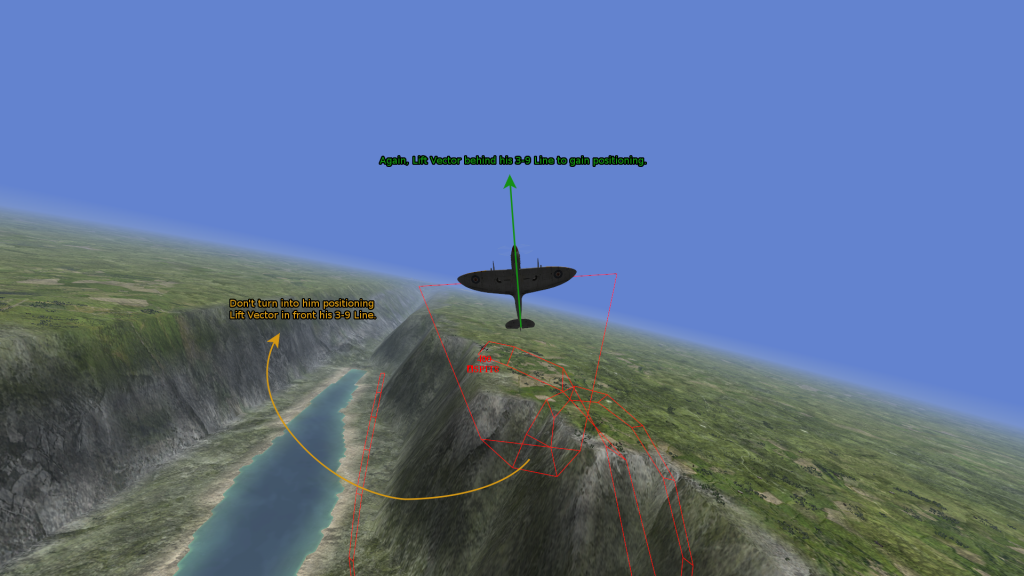
Now I gain a positional advantage behind his 3-9 line and I start pointing my nose towards him to try and line up a shot.
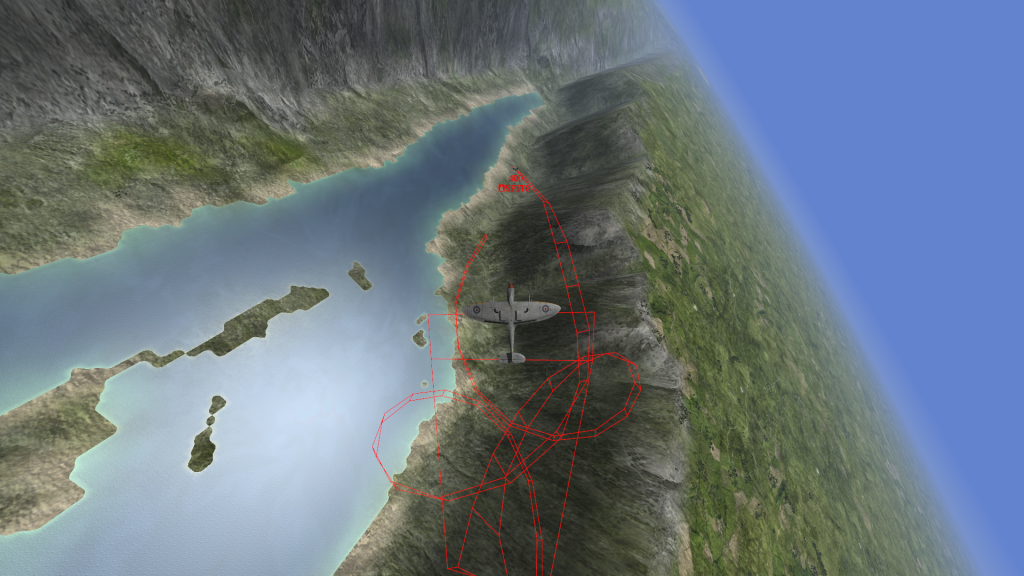
Remember when you're turning into your opponent that you want to get your lift vector behind his 3-9 line. This increases the closure rate, creates sharp angles for them to work with, and will eventually force the overshoot and position you behind their 3-9 line.
The TurnThis little tip can go by unnoticed as it is a very small tip, and very simple, yet it's one that can help you with Energy Management. Always be climbing or diving, even if just a little bit, when making a turn. Flat Turns are the most inefficient use of Energy. A flat turn will change the direction you're flying, thereby creating sharp angles, increasing closure rate, and help force the overshoot, but it burns up your E. It also only creates the horizontal problem for your attacker. A climbing turn will do everything a flat turn does, but it also stores energy in the altitude you gain through the turn. You can then convert this altitude back into energy if you need to. A diving turn will also do everything a flat turn does, but it will also build up energy at the expense of altitude. You can then convert that energy back into altitude if you need to. Something that both a climbing or diving turn do that a flat turn does not is create a vertical problem for your attacker. Now instead of just pulling lead into your turn for a shot you will either dive below or climb above their nose, forcing them to line up a shot vertically as well as horizontally.
It's a very simple concept, but it can be the deciding factor in a fight. Next time you run out of E in a fight and get shot down think back to try and remember if you pulled any flat turns. A climbing or diving turn instead of a flat turn in that 1 moment could have been that last bit of energy you needed to win the fight.